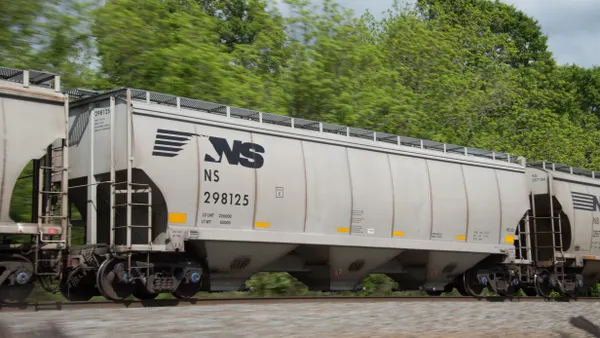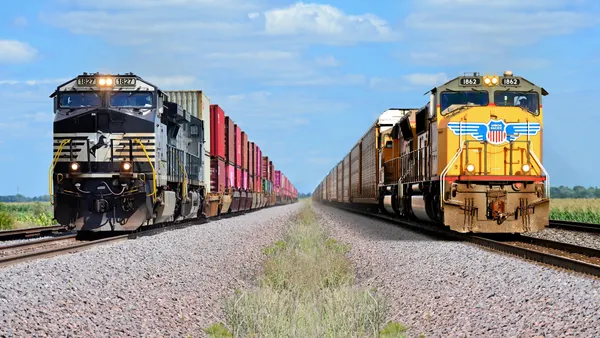Dive Brief:
- CSX has laid off 86 employees, including some management, in further efforts to drive down costs amid depressed freight volume. A spokesperson for the railroad told Supply Chain Dive the affected employees were notified earlier in June and offered severance. The Jacksonville Business Journal was first to report the news.
- "The changes followed a careful review of our management organization that considered what work we should be focused on and whether that work resides in the right place in the organization. The synergies achieved through these realignments, unfortunately, resulted in the reduction of some management positions across the company," said the spokesperson.
- The railroad's explanation for the layoffs did not specifically reference the coronavirus pandemic, but CEO Jim Foote has forecasted that the capacity and staffing cuts made possible by pandemic-driven down volumes may stick even when volumes return.
Dive Insight:
For U.S. Class I railroads, labor has historically been "a very big conduit for margin expansion and efficiency," Amit Mehrotra, managing director for U.S. transportation and shipping at Deutsche Bank, said in a fireside chat with Foote during the bank's 2020 Global Industrials & Materials Summit Conference on June 9.
In other words, the railroads flex their train and engine workforces up and down with freight volume in order to maintain profitability.
While "headcount," as railroad executives call it, was already on the decline before the pandemic revealed itself in the U.S., management staff are often less exposed to fallout from freight volume fluctuations. Leadership cuts are not the usual go-to for labor savings amid down volumes, however, the pandemic has changed many historical trends across industries.
Despite reduced staff and fewer locomotives, shippers will not notice a dip in service despite the cuts, Foote said — though back in April he alluded to negotiations that could lead to fewer service days per customer. Tony Hatch, president of ABH Consulting, told Supply Chain Dive via email railroads should be able to maintain service while cutting costs, "in a declining demand environment," because the guiding principle of precision-scheduled railroading (PSR) is to "sweat the assets" — wringing the most revenue out of every railcar.
In April, Foote said the railroad's implementation of PSR principles would allow it to maintain much of the cost-cutting measures — including labor force reductions. The pandemic has triggered even when volumes return.
Foote and CSX's EVP of Sales and Marketing Mark Wallace have admitted that the outbreak will stretch the PSR operating model more than ever before — offering an opportunity to reexamine how efficient the railroad can really be. In May, the railroad saw a 22% quarter-to-date drop in volume — in line with the 21% drop reported by UBS across all railroads.
"When all of a sudden the bottom dropped out ... we took the headcount again down, and you'll see that again," Foote said in June. However, he pointed out a silver lining for the industry, calling the pandemic an opportunity to gain market share from trucks.
"We have a significant cost advantage versus the truck and in a difficult period of time ... I can save you money, if you put more of your transportation spend on rail, it's a good time for us to do that," he said.













